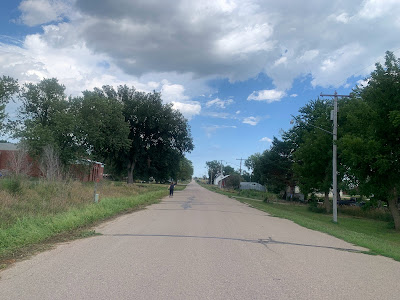I assume many people reading this blog have not been to Nebraska, or even Nijmegen, but if you’ve just been to Nijmegen (hi Marc and classmates!), just Nebraska (hi family!), or neither (hi friends from home!), you may not see the shocking similarities. The landscape, the smell, the geography, the weather, the number of cows, and more reminded me of Nebraskan summers. In an earlier blog, I stated that I thought more aspects of Danish bicycle design would be applicable to the US as opposed to Dutch design (which I objectively prefer, but thought Danish design was more suited for current American bicycle attitudes and urban design), however, Nijmegen changed my mind. Nijmegen is an example of a mid-sized city with medium-density levels. It is probably comparable to many American cities, especially cities geographically located within the Great Plains and Midwest. The before and after visuals of Nijmegen streets reminded me of American neighborhoods, showing that these transformations are possible. I knew this from my LiveMove work but seeing it in person and seeing how similar Nijmegen is to Nebraska, a state with a very limited amount of bicycle infrastructure, emphasized that the Dutch model can be applied to the US, and not just in West Coast and Northeast urban areas.
 |
| Sunset in Nijmegen |
 |
Sunset in Omaha
|
There are differences, of course, between Nijmegen and Nebraska, including historical background, ecosystem, size, HDI, and many other physical and cultural factors. The key difference I want to discuss, which should not come as a surprise, is the transit infrastructure and sustainability. Nebraska has an incredibly autofocused infrastructure and is designed for large vehicles like pickup trucks, trailers, tractors, and other farming equipment. I’ve always thought that bringing bicycle infrastructure to this area of the country would be impossible. Many people rely on their vehicles for their work and towns and resources are often miles apart. Seeing the infrastructure outside of Nijmegen showed me that bicycle infrastructure is not impossible. The ride to Lind was pleasant and safe with beautiful views, even when biking back along a shared car-bike road. While I do not expect bikes to replace the vehicles Nebraskans need for agriculture and longer distances, it would be a great option for travel around small towns, into town, and in between the network of small towns, that are often serviced via dirt roads. The dedication to preserving the natural landscape of the area by using dirt-colored asphalt for the road is just one of the aspects of transit design that I believe would make cycle infrastructure in states like Nebraska work. Below, I threw together a photoshopped rural Nebraskan road to one) emphasize the similarities I saw between it and Nijmegen and two) show that this change could be simple and inexpensive, and most of all possible!
 |
Road in Primrose, Boone County, Nebraska (Population 61). Taken by Me in August 2022.
|
 |
| Reimagined road inspired by what I saw biking outside of Nijmegen. |




This is very awesome! I think you should make a short video - with renderings! - linking these two locations as I'm pretty sure nothing like this exists anywhere in the world. What a great rendering!!!!!
ReplyDelete